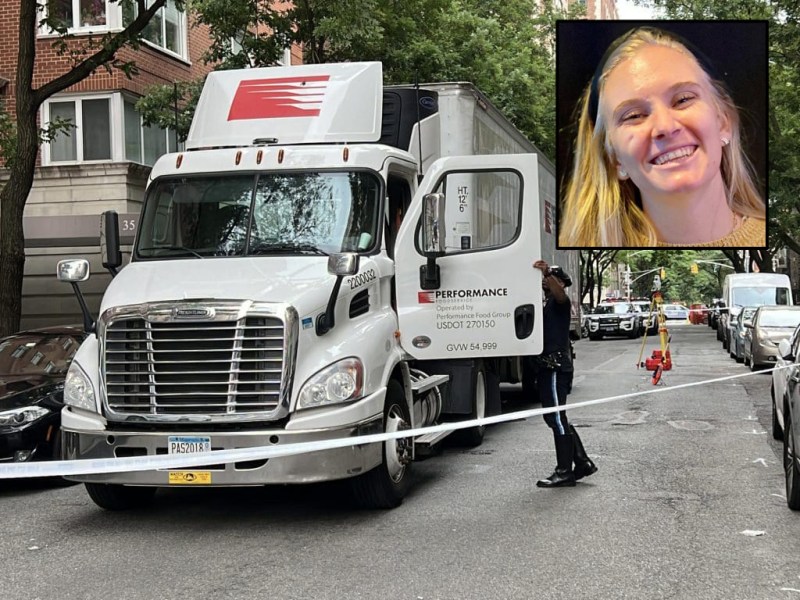DELAY AHEAD: Upper West Side Panel Wants DOT to ‘Study’ Protected Bike Lanes

An Upper West Side community board on Tuesday night rejected its own transportation committee and demanded more “study” of a city proposal to add life-saving crosstown protected bike lanes in the neighborhood — a move that only delays the safety that comes with a road design that has existed for nearly two decades in New York, advocates say.
“Protected bike lanes save lives. It a no-brainer,” said resident Oliver Niu in calling for the full Community Board 7 to approve the resolution supporting the bike lanes that was approved overwhelmingly by the committee last month. “I think we need to move a lot quicker than we have been moving in the past.”

The resolution originally demanded that DOT create “a detailed proposal for an all-ages-and-abilities network of fully protected east-west bike lanes with appropriate pedestrian refuges and protections approximately every 10 blocks between 60th and 110th streets.”
But during the full board meeting, board members ended up only passing a resolution calling for the DOT to study protected bike lanes, which it has been building all over the city since the 2000, rather than simply implement something that the Upper East and Upper West lack: crosstown protected bike lanes.
The call for “study” only undercuts safety, said board member Ken Coughlin.
“It effectively neuters the resolution to call it a study,” said Coughlin. “Studies gather dust on shelves.” (Another “study” worth noting: Protected bike lanes make roadways safer for all users, according to the DOT. “protected bike lanes reduce risk of injury by 34 percent on streets where they are installed,” the agency said in 2021.)
The debate comes after 28-year-old Carling Mott was killed last year on the Upper East Side after the city failed to build a bike lane, bowing to pressure from well-connected East Siders, including Rep. Carolyn Maloney and a sister to then Gov. Andrew Cuomo.
And since just the start of this year, there have been 206 reported crashes within Community Board 7 — where more than 70 percent of households do not own a car — injuring 18 cyclists and 25 pedestrians, with two pedestrian fatalities, according to city stats via Crash Mapper. There are more than three reported crashes every day in the relatively small neighborhood.
Mott’s boyfriend last month begged the board to finally support a network of protected crosstown bike lanes — which could have saved his girlfriend’s life, and will save others.
“I can’t imagine why anyone would not support this call for safer infrastructure,” said Nick Ross. “We can always quibble later about specifics of where these lanes go, how they are constructed, all the minutia. For now, I urge you to vote in strong support of getting us on the right track by passing this resolution and ensuring all of our riders are kept safe and prevent more deaths in this city.”
Ross and others’ heartfelt and emotional calls for crosstown bike lanes even prompted one woman to change her mind about whether she supported the proposal. Going into that meeting, Lauren DeFazio said she was prepared to vote against the bike lanes, but was swayed by the “heartbreaking testimonies.
“I made a complete 180-degree turn,” DeFazio wrote in an op-ed in Streetsblog. “I went from being dug in about not wanting to accommodate cyclists to realizing that I had no clue about the ramifications not having such infrastructure has on cyclists and the people who love them. In too many cases, the lack of safe space to bike has resulted in lost lives — brothers, wives, roommates, and friends killed because our streets are not conducive to imperative road sharing.”
The board’s vote comes after CB7’s neighboring civic panel, CB8 on the Upper East Side, voted in September in favor of protected crosstown bike lanes, including on E. 85th Street, where Mott was killed.





